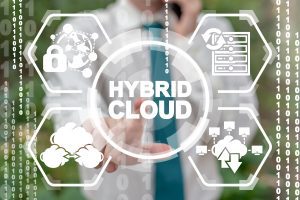5 Trends every CIO should be aware of in 2020

Chris Lloyd-Jones, product & engineering lead for emerging technology at Avanade, predicts five trends that should be on every Chief Information Officer’s radar in 2020
The workplace has traditionally been viewed by the business as little more than an operational expense, and the focus for IT has been on keeping it up to date without blowing the budget. But things are changing. Research is emerging from sources like MIT’s Center for Information Systems Research that shows the tangible business impact of employee experience – it can boost profitability by 25%, and help companies become twice as innovative.
The C-suite is starting to appreciate the business value of the workplace, and they’re enlisting the support of IT departments to find the right solutions to help their workforce perform at its best. 2020 is IT’s moment to shine, and they’re seizing it by tapping into a range of technology trends that just might redefine the workplace. The following is what I am predicting for 2020.
The perceptive spaces trend
In 2020, improvements in battery life, tethering, wireless charging, and connectivity will support the emergence of ‘perceptive’ spaces – spaces that can adapt to workers’ needs intuitively. For example, a room could support a private call one minute, and then switch to suit a collaborative meeting the next.
This trend will rely on technological aids, such as spatial anchors for indoor mapping and locating; audio-visual equipment with automatic connections; automatic transcription of meeting minutes and extraction of actions; and, finally, tracking workspace occupancy peaks and troughs to recommend spaces to work with colleagues.

Virtual collaboration across borders
There will also be an effort to use workplace technology to increase collaboration across borders and time-zones. In a globalised business environment, employees have made the best of virtual collaboration technologies available to them, but they are rarely seamless, or without their limitations.
But savvy startups are advancing the possibilities in this space, introducing technology that uses Augmented Reality to give employees the virtual impression of working side-by-side with colleagues in other geographies.
These types of solutions will only gather pace in 2020, as offices start to transmit video and audio between their locations on a constant basis. For example, colleagues moving in one office could be projected onto the hallway of another to create virtual ‘water cooler’ moments, and phone booths could holographically replicate objects and displays from another location to reinforce a sense of proximity.
“In a globalised business environment, employees have made the best of virtual collaboration technologies available to them, but they are rarely seamless, or without their limitations.”
Practical uses for blockchain
Blockchain has enjoyed significant hype ever since the concept was first introduced in 2008, and in 2019 we saw it shift into the enterprise in the form of tentative pilots and proofs of concept. In 2020, IT teams will look beyond its original financial use case, to see the technology for its broader potential as a Distributed Ledger Technology (DLT). This means viewing DLT as a true enabler of automatic transaction execution, a single source of truth, and a glue between organisations – for example, sharing data securely between procurement functions, or allowing organisations to pool data in an aggregated way.
IT functions will be expected to be the experts of this freshly mature technology, as C-Suites see use cases in other companies and look to implement similar initiatives in their own. Examples such as Starbucks’ use of DLT to track beans from grower to cup, or JP Morgan’s use of blockchain internally for core business processes, are sure to stir up renewed excitement. A word of caution, however – whilst DLT will establish itself as a mature technology, joining the realms of database and the trusty service bus, IT will need to ensure it is used in scenarios that are fit-for-purpose.
READ MORE: Okta – Preparing for the evolving cybersecurity landscape in 2020
More ethical security solutions
The more connected the workplace becomes, the greater pressure there is on IT teams to secure it. GDPR and other global legislation has raised the stakes in this regard, as IT teams are now not only fending off cyber-attacks and phishing schemes but also trying to prevent costly data leaks.
And the function is feeling it, with CISO burnout reported widely in industry publications. In 2020, IT teams will start to turn to more practical and flexible solutions that bolster security by encouraging uptake throughout the workforce.
Security will also need to take on the additional burden of Digital Ethics, focusing on enterprise reputation, sustainability, and authenticity. Organisations who ignore these points will face potential existential risks in an uncertain yet principled world.

The gig economy trend continues
In 2020 we’ll see the continued rise of the gig economy, alongside an increased investment in talent. Millennials, in particular, are questioning the concept of a fixed employer, preferring to flit from one project to another as they choose. This calls for more advanced compensation models beyond the traditional monthly paycheck, and as well as the flexible technology to support it. In other words, Human Resources will need to undergo a dramatic IT-enabled shift.
For companies requiring access to talent in limited supply – such as data science and security – we’ll see a trend develop; the rise of ‘companies that care’. The focus will be on retaining people over the long term to maintain the company’s stake in the war for talent, as well as nurturing early skills from university and tertiary education throughout the entire career. IT will need to ensure performance can be managed in constant review, at the same time as supporting flexible working and compressed hours.
As C-Suites come to realise the impact employee experience can have on their bottom lines, the appetite for workplace technology is as strong as ever. As the New Year (and the new decade) ticks over, there is an opportunity for IT departments to play a leading role in guiding these investments. And with the wealth of new technologies entering the marketplace, 2020 is bound to be the year that the workplace experience gets shaken up.
